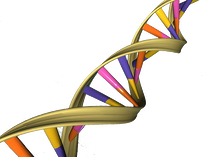Situated in Upper Manhattan, in the busy, bustling city of New York, Columbia University attracts a wide variety of highly intelligent students and researchers to its world-class facilities. Within the four main graduate schools in the Columbia Medical Center (College of Physicians and Surgeons, College of Dental Medicine, Mailman School of Public Health, School of Nursing), hundreds of researchers work in the different research facilities to find new knowledge and develop therapies to improve public health in New York and around the world.
Read MoreRecent Posts
Tags: New York, Columbia University, Armory Track and Field, 2015, Columbia, BioResearch Product Faire Event

The University of Maryland, Baltimore Institute for Genome Sciences (IGS) recently received a grant of $15.2 million from the National Institute of Allergy and Infectious Disease (NIAID) to establish a new research center. This 5 year award will be used to establish the IGS Genome Center for Infectious Diseases.
The new center will be led by an interdisciplinary team of University of Maryland, Baltimore researchers from the Institute of Genome Sciences, Department of Microbiology and Immunology, and the Center for Vaccine Development who will study pathogens and their hosts using different genomic techniques to gain a better understanding of how pathogens cause harm. In the IGS Genome Center for Infectious Diseases, researchers will be able to study pathogen biology, virulence, drug resistance, immune invasion, and host-microbiome interactions using different genomics and bioinformatics approaches. (Image courtesy of Wikimedia).
Tags: Northeast, Maryland, 2015, Baltimore, University of Maryland, Baltimore, UMDBalt, BioResearch Product Faire Event
When someone gets an open wound or injury, one of the first things the body does is try to stop the flow of blood. The body does this by forming clots that turn the blood from liquid to gel to plug the wound and stop the body from bleeding out. If this clotting doesn't happen right away, it makes further treatment and healing of the wound more difficult or impossible. To help with the clotting process, researchers at the University of California, Santa Barbara have created nanoparticles that resemble blood platelets that can be used to speed up the healing process and create clots faster to decrease blood loss from an injury.
Read MoreTags: CA, Southwest, 2015, BioResearch Product Faire Event, UCSB, Santa Barbara
A team of neuroscientists at Rockefeller University in New York have developed a new method of imaging the brain and other large biological samples, called iDISCO, that allows researchers to see molecular complexities within these samples in 3-D.
Read MoreTags: Rockefeller University, Northeast, 2015, RockU, BioResearch Product Faire Event, NY
 Premature birth, babies born before 37 weeks, can cause serious health problems for the half a million babies born early every year in the U.S. Health risks for premature babies include cerebral palsy, learning disabilities, vision and breathing problems, and hearing impairment. There are many different factors that can lead to preterm birth, but most of these factors are poorly understood. Further research is clearly needed to help better understand the causes of premature birth to lead to preventative methods. The March of Dimes Foundation of Philadelphia recently announced that it will donate $10 million over five years to establish a new Prematurity Research Center at the University of Pennsylvania. (Picture on right courtesy of Jennifer of Biotechnology Calendar, Inc.)
Premature birth, babies born before 37 weeks, can cause serious health problems for the half a million babies born early every year in the U.S. Health risks for premature babies include cerebral palsy, learning disabilities, vision and breathing problems, and hearing impairment. There are many different factors that can lead to preterm birth, but most of these factors are poorly understood. Further research is clearly needed to help better understand the causes of premature birth to lead to preventative methods. The March of Dimes Foundation of Philadelphia recently announced that it will donate $10 million over five years to establish a new Prematurity Research Center at the University of Pennsylvania. (Picture on right courtesy of Jennifer of Biotechnology Calendar, Inc.)
Tags: Northeast, University of Pennsylvania, UPenn, 2015, Philadelphia, BioResearch Product Faire Event, PA
The University of California, San Diego is a world-class life science research institution. The University has many research centers and programs that help enhance the wide range of research projects that UCSD scientists perform. Research centers at UCSD include:
Read MoreTags: CA, Southwest, 2015, San Diego, SDVS, UCSD, UC San Diego, Biotechnology Vendor Showcase
When a pandemic appears in the world, people start to worry about whether or not they will be affected by the disease. Questions arise like: What are the chances of it spreading? Are there vaccines? Pandemics like the H5N1 avian flu in 2004, the H1N1 flu virus in 2009, and most recently the Ebola epidemic in West Africa have brought about these types of questions. Most often, when an epidemic breaks out, there is not a common vaccine or cure right away. Texas A&M University is in the process of designing a new Pandemic Influenza Vaccine Manufacturing Facility expected to be operational in 2017.
Read MoreTags: Southwest, 2015, College Station, TAMU, BioResearch Product Faire Event, TX, Texas A&M
In 2010, the Macondo well in the Gulf of Mexico blew-out, leading to the largest off-shore oil spill in the United States, known as the Deepwater Horizon Oil Spill, or the BP Oil Spill. 4.9 million barrels of oil are estimated to have gushed into the Gulf waters during this time, causing an immense impact on the ecosystem in the Gulf. Now, 4 years after the spill, the Gulf of Mexico is still greatly impacted and affected by the oil left in the water. Researchers at the University of Georgia, Athens recently received $18.8 million to continue their study of the impacts of this oil spill on the ecosystem.
Read MoreTags: University of Georgia Athens, Southern, 2015, UGA, BioResearch Product Faire Event, Athens, GA
 Researchers at the Icahn School of Medicine at Mount Sinai University in New York have been studying how stress on fetal development is affected by different environmental toxins. The National Institute of Environmental Health Sciences (NIEHS) recently awarded Mount Sinai professor and researcher Manish Arora, BDS, PhD, MPH a $1.5 million New Innovator Award to help him continue this research. (Image on left courtesy of Wikimedia)
Researchers at the Icahn School of Medicine at Mount Sinai University in New York have been studying how stress on fetal development is affected by different environmental toxins. The National Institute of Environmental Health Sciences (NIEHS) recently awarded Mount Sinai professor and researcher Manish Arora, BDS, PhD, MPH a $1.5 million New Innovator Award to help him continue this research. (Image on left courtesy of Wikimedia)
Tags: Mount Sinai School of Medicine, Northeast, New York, 2015, MSSM, BioResearch Product Faire Event, NY
Do you have lab products that you want to market to life science researchers? Are you interested in meeting with hundreds of active researchers to sell your lab equipment? If you answered yes to either of these questions, consider attending the 2015 39th Semiannual Biotechnology Vendor Showcase™ at the University of California San Diego in February!
Attending a Biotechnology Vendor Showcase™ at UCSD gives YOU the chance to meet with nearly 500 active life science researchers in need of new lab equipment to help with their work. The event is located on campus, as close to the research labs as possible, making it convenient for the researchers to take a break from their work to come visit the show and discover the best and newest products and technologies that will help move their work forward.
Read MoreTags: CA, Southwest, 2015, San Diego, SDVS, UCSD, Biotechnology Vendor Showcase

